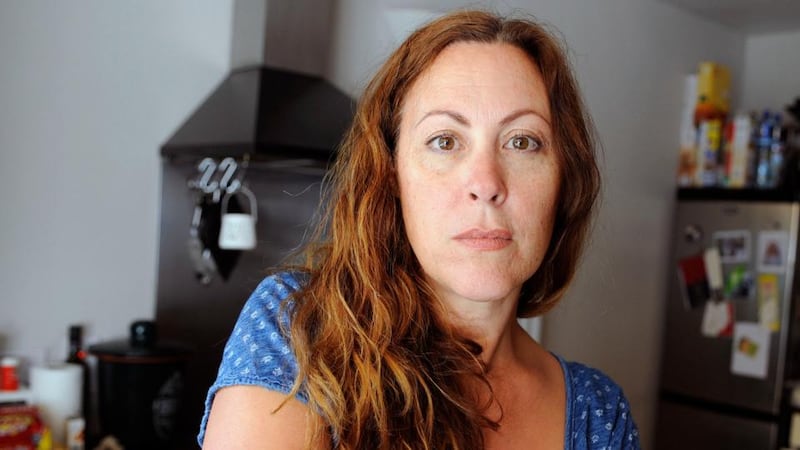It's unsettling when you ask your doctor if you should be worried and he says, "Well . . . it's your brain." I'd just had a CT scan in the Charlemont Clinic, but I couldn't take in what the consultant was saying.
I heard only the words “abnormal” and “brain”, and although that’s a joke begging to be told, it wasn’t really a laughing matter.
Very early the previous morning an explosive pain in my head woke me up. Our two-year-old daughter lay sleeping between my husband and me and I didn’t want to disturb the peace, which might explain why I quietly accepted the sensation of giving birth through my head.

I had been having dull headaches for weeks, but this was different. This was the mother of all pain. “I’m not managing this,” I whispered.
“Think of the birth of your children,” my husband whispered back, supposing he was sending me to a nice place. Wrong answer – but then he wasn’t to know I was having a minor brain haemorrhage at the time.
Brain lesion
The CT scan revealed a lesion in my brain, termed an AVM, or arteriovenous malformation. It's when the arteries become tangled with veins, inhibiting blood supply to the brain. The haemorrhage I had was small but there was a bigger one pending.
It was kind of serious (about one out of every 100,000 people will suffer an AVM) but I still waited four months for a hospital bed.
I was advised against exercise or stressful situations. I walked around on eggshells, trying not to lift my children or worry about dying. I had constant headaches and occasionally dizzy spells and memory lapses.
When I was in the house on my own with the children I felt vulnerable. I taught my four-year-old little girl – my eldest child – how to call an ambulance if she couldn’t wake me. I was scared going to sleep. My husband would check if I was breathing. Usually I was snoring, having had a few glasses of red wine – for medicinal purposes, obviously. But I wanted to be able to sleep without wine
My team of neurosurgeons, neurologists and neuroradiologistis decided surgery for me was too risky as the AVM was near an optic nerve.
Instead I had several embolisations; treatment that involves having an angiogram, where a catheter is inserted into the main artery, right up into the brain, and injecting a type of glue to the site, where it cuts off the blood supply to the AVM.
We were hoping that my AVM would wither and die. Patients are kept awake for this procedure because their cognitive ability needs to be assessed throughout. It wasn’t pleasant, but it did reduce the size of the AVM somewhat, though after four sessions it seemed embolisation was no longer working.
I was sent for radiosurgery in a Sheffield hospital, there being nowhere in Ireland offering the treatment I needed. The Sheffield Teaching Hospital uses Gamma Knife technology, allowing a focused array of gamma radiation beams, so a high dose can be delivered relatively safely. There was a chance I wouldn't be able to drive or read.
First, I had to have a metal frame secured to my head. Yes, to my head, with screws. I had several local anaesthetic injections into my skull and a kindly doctor offered his hand for me to squeeze. (He said I broke two of his fingers.)
The frame is crucial because it means the AVM site can be located accurately. After some scans and another angiogram my metal frame was connected to a collimator – literally it looks like a giant colander, with tiny openings allowing sub-millimetre precision.
The rest of it is similar to having an MRI scan though not as claustrophobic. The intensity of the radiation is comparable to the strength of the floodlights from 10 football pitches, all condensed into the tiny little openings on my colander hat. I felt nothing.
Radiation
Radiation healing occurs over time, so I was checked up on after two and then three years. I got on with my life. But the last check-up in 2009 revealed that the AVM had not gone away.
The Sheffield treatment had not worked. I climbed into bed for two days. My husband had to entice me out with bottles of red wine.
Despite years of research, the question of whether to treat AVMs has not been answered. All treatments have risks and possible side effects.
Other than surgery, treatment doesn’t always work. Perhaps it might be better not to have treatment and hope for the best. Although my doctors originally thought I could live with the risk, I was sent back to Sheffield. I expect to be called for checking sometime soon.
Sometimes I wonder what I did to deserve this. Other times I remember the people I spent two weeks with in hospital, the ones who were really ill.
At least, I tell myself, I am well. I haven’t lost my peripheral vision and I am living a normal life – even if it is in the company of a stubborn AVM.






